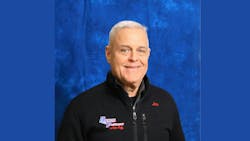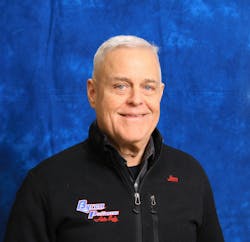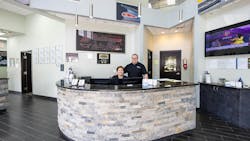The Best Introduction to the Collision Industry? An Early One
When you think back to how you first became interested in the automotive industry, what stands out? What sparked your curiosity? How old were you? How did you learn more about it?
For many, it happened in high school…often in shop class. But not all schools offer shop these days, and even if they do, there’s no guarantee collision is part of the conversation, says Jim Byron, owner of Byron’s Patterson Auto Body in Patterson, New York.
It’s up to industry pros to change that, in his estimation.
“Every shop in America — MSO, non-MSO, it doesn't matter — they can get involved at the high school level to introduce these kids to collision at a young age.”
Whether spotting talent in the classroom or in the employees at his own shop, Byron is a firm believer that interest and strengths are best identified early…when they are, it can result not only in a rewarding career but a long-term employee for you, too.
As told to Lindsey Gainer
Taking Collision to the Classroom
For 25 years, I worked with the Boards of Cooperative Educational Services (BOCES) program in New York, advocating and representing the collision industry to high school kids. They’d pair a paint/equipment vendor with a representative from a collision repair shop, and we’d talk to the students about the jobs available to them.
I understand we work tirelessly in our business — and adding a commitment like this on top of that is asking a lot. But it allows you to interact with the educators, the actual teachers who are instructing these young people, and to better understand their situations with budgets and what they're able to offer. Working with local schools lets us all be part of the solution to end the tech shortage by encouraging students to consider automotive programs, apprenticeships, or vocational school.
Tailor Your Message
Let’s be honest — high schoolers are unlikely to listen to a 60-minute lecture. But if you engage them and ask questions to get them involved in the conversation, talk to them on their level, their response is quite positive.
Get them thinking cars…start with something vague, “Who here likes cars?” That kind of thing. “What kinds of cars do you like?” I'm an old guy, so I say, “What's the hottest thing out there right now?” In more recent years it’s been things like the Subaru WRX and the Honda Civic Si’s. Back in the late '80s it was Monte Carlos with 350’s, or the Buick Grand National. And they all know the Corvettes. You get kids thinking about cars, then move on to questions like, “What do you think happens to one of those cars when it gets into an accident; how does it get fixed? Do you think you just throw it away, part it out? The fender is crumpled. What would you do?”
Bring props with you — something like a headlight assembly — and ask them what they think it came from, what kind of car, and show them how it attaches to the structural member. Get them thinking about what would happen if it got hit in an accident…would it break or would the structural member become distorted? Keep the questions and the conversation flowing. Then move into talking about paint and that side of the business. You can tell pretty quickly who might have an interest in collision work, then encourage them to keep exploring it.
If you have the opportunity to bring students into your shop, make sure you pair them with your shop’s “personality.” We all have one…the people person who loves to do this kind of thing. We have that guy in our shop, and we make it part of his job…he works with all the young people, and he knows how to warm up to them quickly and get them to warm up to him quickly. Make it an easy, interesting experience for them.
Capitalize on People’s Strengths
The amount of experience someone has when they first walk through my door isn’t what’s going to determine their success. Work ethic and passion is what truly matters. Whether it’s a high school kid or an adult, that holds true. You put a kid out on a one- or two-week training program in a collision repair shop and it’s going to be obvious to an educator whether it’s something they may want to pursue. You can then continue honing and engaging their skills and interests, play to their strengths.
Same goes for the adults working for you — you have to recognize and capitalize on people’s strengths for them to feel truly fulfilled in their jobs.
When you think about the reasons people stay in a job, it’s not because of the money — they stay because they feel needed, they feel like they’re an integral part of your operation. They need an environment they can prosper in…that they feel they’re a part of, that they fit into.
Look at your current employee pool first when there’s a void to fill in the shop. Is there someone on your payroll whose strengths would fit the bill? Would they be interested in trying something new?
Just last year I pulled one of my gas station attendants into the collision business because I saw he was great with people and had an interest in something more. Always keep your eye out for opportunities like that.
Create a Culture of Retention
I've been here for 42 years, and I have people that have been with me since the beginning…and 80% of my workforce has been here for over 25 years.
How do I get employees? How do I build my business? How do I keep my employees? By creating a great working environment…a real one. This is a people business, first and foremost, after all. You've got to make it an environment that people who want to be in this industry want to work in.
I know when I step aside next year and my son, James, and his wife, Stephanie, take over, they’ll continue building on the foundation I’ve laid.
It all boils down to one basic principle: processes do not drive people. People drive the processes.


